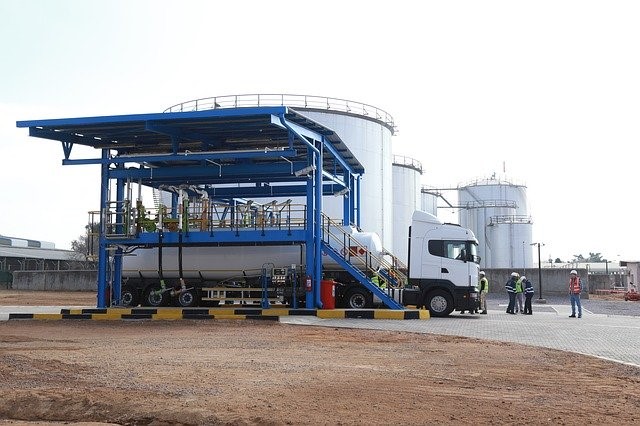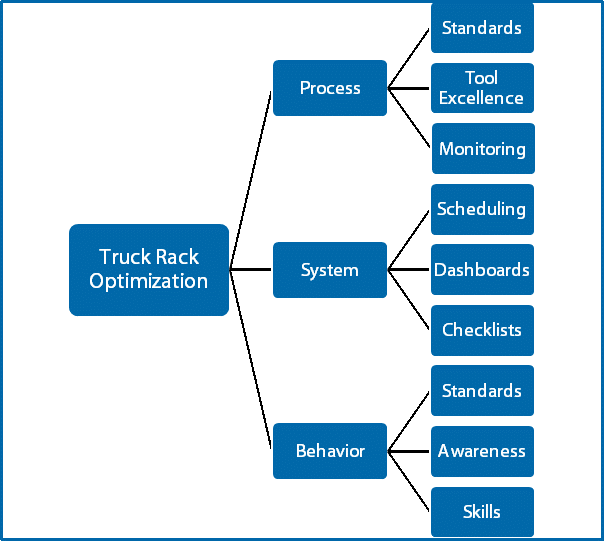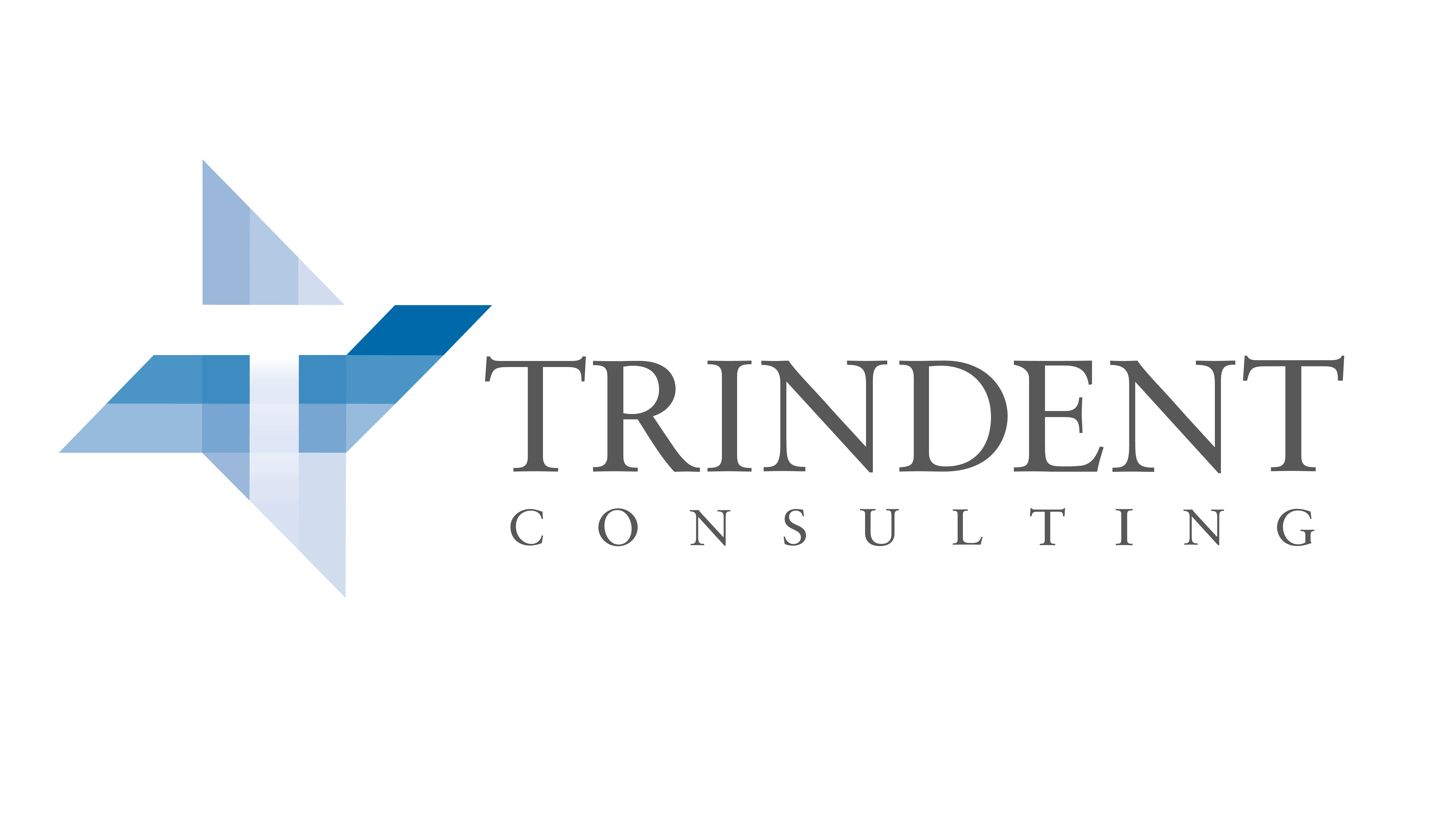Some Like it Smart: Two Different Strategies for Expense Reduction

By Adrian Travis
The recent COVID-19 outbreak has resulted in some very unprecedented actions on the part of world governments and businesses. The only certainty seems to be uncertainty itself, and it’s not yet known how long the situation will last or how damaging its impact will be. Simultaneous interruptions to both supply and demand for goods and services will test the resilience of companies in varying ways. Downturns tend to elucidate the differences between businesses that are strong and prepared, and those that are weak and reactionary.
One unassailable fact is
that ALL businesses will need to shore up their financial performance and
balance sheets. Most cost-cutting
initiatives are indiscriminate and value-destroying in the long run, while a
more targeted approach is always a good course of action for the short, medium
and long term.
Value
Destroying Ways to Impact the Expense Line
During
difficult times, blanket edicts like ‘all cost centers must reduce spending by
15%’ often look like acceptable business decisions but are bad long-term
ideas. Companies fall into several
traps:
1. People are expensive and visible – staff reductions tend to be indiscriminate and expensive if they’re done in a haphazard way. The morale of those that remain is typically problematically impaired. In the long run, it may cost even more to re-hire when situations improve. A great question to ask is: ‘knowing what I know about a given employee – would I rehire them today.” If the answer is yes, then except in a dire situation, making an unfortunate employment decision will typically be a value-destroyer.
2.Abandon long-term projects - Focus on ‘urgent problems and forget the rest’ while sacrificing innovative programs which might sound advantageous in the heat of the moment. If it’s a project that is critical to long-term success, avoid the reactionary tendency to abandon it. Remember, you only regret the things you don’t do.
3.Cut corners – By reducing service and quality attributes, companies inadvertently cause harm to their competitive position. Sometimes companies switch to less-expensive business partners or suppliers only to incur expensive transitions back and forth. Most harmful of all is engaging in an outright refusal to pay invoices or using thinly veiled subterfuge to avoid payment for well-delivered products or services. This final instance has the effect of compromising your business network permanently.
Smart
Strategies for Expense Reduction
Hazard Expenses – These are typically ‘costs of doing business’ hazards like excess, obsolescence, expiry, damages, overages. Making the distinction between ‘good’ and ‘bad’ costs is essential for prioritizing improvement initiatives.
Hidden Losses – Trindent’s consulting practice is almost exclusively focused on ensuring that unnecessary quality isn’t given away in a business process. As well, consider if you are getting full value for the inputs that you pay for. A refinery, for example, typically receives 0.7% less crudes and feedstocks than is paid. The same refinery may also be paying for expensive sediment and water at the full price of crude oil.
Productivity – Impacting human performance by eliminating unproductive activities, rework, waiting, double-handling, planning or other forms of waste is always a viable strategy to compete better. Even in the best of times, Trindent has found that average human productivity in a bank or insurance company processing center is only 43%. The significant opportunity associated with the remaining 57% of ‘lost time’ can be tackled in order to shore up a business’ expense performance.
Cash Flow – Working capital tends to expand significantly during downturns, which forces sometimes counterintuitive decisions to be made on a variety of fronts. Structured working capital initiatives should focus on optimizing receivables, inventories, and payables. There are a number of innovative strategies and tactics that can give a company millions of dollars in free-flowing cash from operations.
Conclusion
While the impact of the business interruption we face is not known, it’s always a prudent idea to shore up a company’s financial position. Episodic cost-cutting initiatives typically undermine a company’s long-term success prospects. However, the best-performing companies are not sporadic cost cutters, but are seeking to drive every-day improvement in the right areas, in the smartest possible ways.
Time Is On Our Side
"Time is on our side…” proclaimed Mick Jagger of the Rolling Stones. Depending on how easily you recognized that song, you may or may not agree and there may or may not be much you can do about it. However, if you are running back-office operations more than likely time is not on your side. The good news is there is more you can do to improve that situation than you think.
The front office or contact center has, for decades, been the standard-bearer for measuring and managing time and their employees' positive or negative relationship to it. With the toolsets available today, literally not a second goes by that is not measured, categorized, and assessed.
In most back-office environments, the focus is predominantly
on the time it takes to complete an end-to-end process. How long it takes to submit
an application, process a claim, or update a client’s address or policy
beneficiary, for example. Often broken down into a series of individual steps
or tasks, managing turnaround time for these processes down to the minute is
critical to the company’s bottom line as well as the all-important customer
experience. Detailed examination of end-to-end processes can, and very often do,
bring hidden opportunities for improved efficiency and cost savings. Trindent can
help with that.
An area where many back-office environments often fall short
goes beyond process management and looks at broader time and resource
management. Outside of the processes you are so closely managing, how are your
employees spending their time? The answer – and even just your ability to
answer the question – may surprise you.
Most office production environments have assumptions built
into their budgets to account for daily non-discretionary unproductive time
like breaks and lunches. Often, there are several other activities, perhaps
more discretionary in nature, like meetings, follow-up on pending cases,
answering email or voicemail, 1 on 1 coaching, training, etc., that occur on a
daily or weekly basis that are not always itemized in operating budgets. All
these activities, discretionary and not, can add up to 30-40% of an 8-hour day,
sometimes even higher. Moreover, you are
very likely paying for overtime as well because somehow processes
and tasks are not getting completed as expected.
Let’s look at the math, shall we?
Typical fulltime day = 8 hours or 480 minutes
Breaks (often 2x 15 minutes) = 30 minutes = 6.25%
Lunch = 30 minutes = 6.25% (Likely unpaid, but time is time)
Follow-Up = 30 minutes = 6.25%
Email / voicemail = 30 minutes = 6.25%
Daily Team Meeting = 15 minutes = 3.125%
Other meetings = 60 minutes = 6.25%
Total Non-Production Time = 195 minutes = 41%
Getting a clear accounting of all these items provides a
much more effective picture of what expectations need to be in place around how
employees are spending their day.
That said, assumptions will only carry you so far. It is in
the tracking of the actual activity where the greatest opportunity lies. The
reality is meetings go long, employees linger over breaks and lunches, follow
up takes longer than expected. What about when your employees arrive and leave
work? Are they arriving on time or leaving early? Suddenly that 41% assumption
starts looking more like 50%. On the other side of the coin, what if you find your
assumptions are inflated but you are still seeing the same productivity? Where
did that time go? (Oh, and did I mention overtime?)
“WE ARE NOT A CALL CENTRE!” is a familiar mantra. Couldn’t
agree more! If you were a call center, we would be pulling out a much larger
magnifying glass. But you do have resources, often hundreds of them, that need
to go through their day in a time sensitive manner. You need to be able to
account for their time.
But don’t despair! Depending on the platforms and tools you have already deployed, a variety of approaches can be taken to make active time management an integral part of your day to day operations. And Trindent can help with that too.
The author of this blog - Paul Camrass is a Senior Consultant at Trindent.
Image courtesy of macrovector
FOCUS PDCA - A Lean Tool For The Healthcare Industry
With a core objective of maximizing customer
value while minimizing waste, Lean management principles are widely used
in most industries, and healthcare is no exception.
FOCUS PDCA is a Lean tool developed by the Hospital Corporation of America to specifically address the complex challenges the healthcare industry faces from increasing quality demands and continued pricing pressures. The tool provides a structure to guide problem-solving and process improvement activities by establishing a comprehensive analysis, response, action plan, and feedback loop that ensures success.
FOCUS PDCA is comprised of two
components – one used to identify and the other to implement.
FOCUS – Identifying the Process
Improvement
FOCUS is an acronym whose steps help
to simplify the process of identifying the area of a healthcare organization that
requires improvement, bringing together a team capable of achieving that improvement,
and selecting the best possible solution to implement the improvement.
Broken down by its parts, here is
how FOCUS works:
Find a process to improve – Identify the process improvement opportunity
Organize the effort to work on improvement – Identify who the key stakeholders in the process are and
who should be part of the improvement team
Clarify current knowledge of the process – Leverage stakeholders’ input to ensure that all information has been gathered and there is a consistent mindset on both the process improvement opportunity and the direction of the proposed solution
Understand process variation and capability – Identify
potential process variations, small or large, and their possible effects on
change implementation.
Select a strategy for continued improvement – Select an implementation strategy, outline the expected results, and identify success criteria using the information gathered from the above steps as input.
PDCA
– Implementing the Solution
Once the FOCUS process has
identified the area for improvement, brought together a team, and found the
best possible solution, it’s time to implement that solution.
The PDCA portion of the tool
identifies the process to successfully implement the changes and verify that
the desired result has been achieved.
- Plan – Create an action plan for implementation, including a list of required steps, the implementation schedule, ownership, and responsibilities, and desired outcomes.
- Do – Start implementing the plan, following the Plan steps, and adhering to the schedule to stay on track.
- Check – Take measurements against the success criteria set when selecting the strategy to ensure the implementation is progressing as it should be.
- Act – Based on Check results, determine the process was successfully changed; or return to the beginning of the cycle if it did not meet goals.
A
Practical Application
Although developed specifically for healthcare, the FOCUS PDCA tool covers all the basic components needed for improvement in any business process, and over the past 12 years, Trindent Consulting has successfully applied lean process management concepts in healthcare, energy, and financial services.
Click here to learn more about how Trindent can help healthcare organizations tackle their unique challenges.
Ten Principles of Clear Statements For Business Writing

Good writing aims to communicate a clear
message. In business writing especially,
brevity and clarity are key to communicating effectively and getting buy-in
from the key stakeholders in your audience.
The last thing a writer wants is to leave their audience wasting time
trying to decipher complex text or dig through a clutter of unnecessary words.
Given the need for precision in business writing, a set of ten “how to” principles was designed by Robert Gunning, the creator of the Gunning Fog Index. Gunning believed that writers “need a set of principles that strike at the root of Fog …to serve as a useful guide to clear thinking, and thereby to clear writing”.
Ten Principles of Clear Statements
- Keep sentences short
- Prefer the simple to the complex
- Prefer familiar words
- Avoid unnecessary words
- Put action in your verbs
- Write the way you talk
- Use terms your readers can picture
- Tie in with your reader’s experience
- Make full use of the variety
- Write to express, not to impress
Not all principles will apply in everything you write but using some appropriate combination of the principles will help you create documents that paint a clear and concise picture for your reader. In writing materials in the healthcare consulting world, for example, principles 7 and 8 can be indispensable in gaining support from key stakeholders.
Use Terms Your Reader Can Picture and Tie in With Your
Readers’ Experience
Healthcare professionals use very specific language in their work. In producing documentation for a healthcare consulting engagement, using terms your reader can picture, and using their experience as context, makes a substantial difference in writing concisely and keeping the reader engaged.
Take for example the terms “wheels out” and “wheels in”. To the average person, these will read as something to do with car repair, or possibly an arrival time. But to a healthcare professional, they will instantly paint a picture of a patient bed rolling into or out of an operating room and will start them thinking of turnaround times associated with surgery. Best of all, the use of that terminology requires no explanation, thereby reducing the length of the document being read.
Using principles 7 and 8, in this case, created a powerful and clear message with minimal words.
Keep This List with You
Not every one of these principles is going to apply to every business document, but the ability to use precise language tailored to your audience is key to increasing your likelihood of getting stakeholder buy-in. To begin writing clearly and keeping your reader engaged, keep this list with you.
Hydrocarbon Loss: Regaining Control
Hydrocarbon Loss costs individual refineries millions of dollars per year and occurs daily in refinery operations when improper systems, processes, and behaviours are in place. Best-in-class targets are under 0.25% loss while under 0.5% loss is considered an achievable target for the average refinery. If your refinery is performing worse than these targets or, worse, is operating in the dark, don’t worry, a solution exists – Hydrocarbon Loss Control Programs.
A Hydrocarbon Loss Control Program is a set of measures that can be implemented to systematically reduce refinery Hydrocarbon Loss. A key component of the program is Mass Balance. At a refinery, there are various temperatures, pressures, and chemical transformations happening throughout the process that make measuring on volume ineffective. As a result, mass – which can be neither created nor destroyed – is used to identify where hydrocarbon loss or gain is occurring.
An effective Mass Balance program will identify all refinery fence line inputs and outputs to identify known losses and potential causes of unknown losses. In a previous article, we discussed the common causes of Hydrocarbon Loss. At Trindent, we use a structured approach to prevent these common causes, regain control of Hydrocarbon Loss, and achieve mass balance.
How
Do We Reduce Mass Balance Loss?
Mass balance relies heavily on accurate data; however, at a refinery, there are many possible sources of error. One way our team of Hydrocarbon Loss Consultants helps reduce mass balance loss is by improving measurement accuracy at the refinery fence line. With more accurate data, refineries can use data-driven decision making to eliminate the root causes of loss. Part of our mass balance programs focus on:
- Meter Troubleshooting – First and foremost, it is important to determine if the proper meter is in place for measuring the desired characteristics considering the process and environmental conditions. Secondly, meters need to be proved at the right frequency and with the right conditions in order to be meaningful. We use meter proving check lists and control charts to determine whether this is occurring.
- Tank Gauging – There are many methods for storing
hydrocarbons: tanks, rail cars, marine vessels, shore tanks, etc. Each method
has its own sources of error when measuring the quantity of hydrocarbon. For
example, tanks can have tank stratification or shifted bottoms which reduce the
accuracy of measurements. Marine vessels can be subject to dynamic ocean
conditions which can make for difficult measuring conditions. We use our
knowledge and standardized check lists to troubleshoot and reduce these errors.
- Measuring Sediment and Water
(S&W) – Understanding
the sediment and water content allows for the refinery to properly account for
these non-value added intrusions. However, refineries do not always follow
measurement best-practices and can obtain erroneous results. For example, when
measuring suspended S&W it is important to grab samples from the top-down
to prevent contamination. Another common error is to not use a demulsifier or
to use expired demulsifier which greatly reduces the ability of a centrifuge to
separate water from the crude sample. We use standardized check lists and
measurement analysis tools to obtain representative samples and determine when
action is required.
At Trindent, we focus on tangible results and showing improvement through data. Our data-driven approach links our results to financial or other key performance indicators. In addition, we make sustainability a key part of each engagement, and train your employees to sustain results.
To learn more about how Trindent can Make It Happen in your company, reach out to our team on LinkedIn or through our Contact Us page.
The author of this article, James Greey is a Senior Consultant at Trindent.
Truck Rack Process Optimization: A Case Study in Refinery Performance

Performance consulting, by
definition, deals with the integrity and effectiveness of processes. At Trindent Consulting we know that process effectiveness
is impossible to achieve without also addressing two important aspects of every
organization: The system, which
measures and guides the process, and the behaviour of process
participants, which is a direct response to the system.
This is true with the simplest of the processes in small companies and becomes even more important with the increased complexity of medium to large organizations. Oil refineries fit the category of a “complex organization” and have been an area where Trindent Consulting has consistently brought significant value, working with various processes and components, saving our clients millions of dollars without requiring any capital expenditure.
Refining Refineries
Truck Rack operation is a good case study to illustrate the importance of an inclusive approach to process management. It may be considered one of the less complex processes in a typical refinery, but it provides ample opportunity for improvement if the right approach is followed.
Refineries produce many types of products, including various types of gasoline, such as 83 ON and 91 ON. The Truck Rack uses these as ingredients in its recipes to produce gasoline types supplied to the end user. The recipes are well known, the math behind them is straightforward, and measurement equipment is in place to ensure accurate performance. However, Trindent in its work with quality giveaway reduction has repeatedly been able to help refineries achieve significant savings by reducing octane give-away and optimizing the blending process – including the theoretically simple Truck Rack process.

Secret Ingredient
This is achieved by critically evaluating existing components of the process, system, and behaviour; and then addressing any areas of divergence from industry best practices. Combined with proprietary benchmarking and a robust effort to develop solutions uniquely tailored for every client, the approach yields a significantly enhanced competitive advantage. A unique benefit of using Trindent’s approach is that no capital expenditure is required in achieving lower octane give-away numbers, which then translates directly into significant refinery margin improvement.
Another added benefit for
refineries is that the improved accuracy in blending and quality control allows
them to stay away from failed recipes, which arguably have even larger impact
on a refinery by opening it to the risks associated with poor product quality,
re-blend opportunity costs and dissatisfied customers.
Hidden Opportunities
Regardless of how straightforward a
process may seem, there is always ample hidden opportunity for improvement
without capital expenditures. All that’s
required is a methodical and
systematic approach to addressing all the components. Trindent Consulting specializes in conduct
assessments to uncover opportunities to improve refineries’ operations to
best-in-class performance
The Cost of Outdated Processes
An outdated or inefficient process can have a greater impact
on an organization than management realizes.
Previous articles in this series looked at the challenge of identifying inefficient processes. This article will discuss the impact on organizations if they don’t make the effort to root inefficiencies out and correct them.
Increased Costs
One of the most noticeable effects of an inefficient
process is an increase in costs, driven
by factors like longer processing times, elevated labour costs, lower direct
labour utilization and overtime, increased inventories with lower turns,
increased material consumption, material loss, high rework levels, multiple and
unnecessary touch points and similar factors.
Without identifying and addressing the outdated
processes that lead to these inefficiencies, an organization may be leaving hundreds
of thousands of dollars on the table.
Lower Service Levels
Another result of a sub-optimal process is reduced
service levels. Whether the process
services an external customer or an internal downstream department, longer
processing times will inevitably trickle down and affect overall company
performance. In addition to driving
higher costs, increased service levels seriously impact the competitive
position of the company.
Some external service
levels can be effectively benchmarked against industry
standards and trigger inquiries into efficiency when the company fails to
operate at a certain level. With
internal processes however, it is often impossible to gain insight about the internal
metrics of competitor companies in order to be able to compare apples to
apples.
Lower Revenue
Inefficient or outdated processes simply cannot produce
the same amount of customer value per unit of time as their streamlined and
efficient counterparts. In addition to
reducing the profitability of what is being produced, outdated processes
may lead to reputational risk and result in missed sales because they hamper an
organization’s ability to meet demand.

Result: A Lower Competitive Position and A Higher Risk
The competitive position of any business is determined by the amount of value it can generate and its ability to capture that value. The figure above shows the effects of the outdated processes discussed above. The inefficiencies exert dual pressure: Downward on the value of the product or service, and upward on cost of providing it. The overall effect is a reduction in profitability.
A major risk associate with running an organization that
has low competitiveness and profitability is the financial difficulties they
will face when market conditions worsen. As a direct consequence of being in a weaker
competitive position with lower profits, an organization may find itself underwater
in situations where its competitors manage to weather the storm.
Delaying evaluating existing processes with a
systematic approach may prove detrimental to long-term success.
Click here to learn more about how Trindent Consulting can help you evaluate and correct your outdated and inefficient processes.
Inventory as a Tool – A Healthcare Perspective
For
healthcare organizations, inventory can be an important and powerful tool for
controlling effective equipment management programs and providing better access
to, quality of, and utilization of medical devices.
Accurately managed inventory can also be used for forecasting, developing budgets, performing risk analysis, risk management and mitigation, developing replacement and disposal practices, maximizing optimal safety stock inventory, and more. The insight it provides into an organization’s financial state allows for confident business decisions that translate to savings.
As
healthcare organizations face increasing pricing pressures, one area where
inventory can specifically be used as a tool to uncover savings is in assessing
the benefits of equipment standardization.
Using Inventory as an
Assessment Tool
Medical
equipment has significant impact on healthcare costs. For healthcare providers, equipment
standardization is one way they can reduce direct and indirect expenditures –
and equipment inventory is a key metric to finding and realizing the financial
benefits associated with standardization.
In
assessing their medical equipment costs, healthcare organizations take a number
of measurements into consideration; the number of SKUs on hand, cost per SKU, cost
of inventory space, failure rates of equipment, use frequency of parts, variability
between different pieces of equipment, cost of equipment maintenance, and the
cost of training users and technical maintenance staff on using various pieces
of equipment.
Much
of this information is either directly or tangentially gathered from equipment
inventory, and it gives healthcare organizations real insight as to where they
can streamline and standardize their operations in order to reduce costs.
The Benefits of Equipment
Standardization
Equipment standardization allows organizations to
realize benefits like a reduction of equipment SKUs;
a need to have fewer parts on hand; a reduction in training needs; having less
supporting documentation to process; simplified vendor management; and the advantage
of increased bulk discounts.
Put
together, these benefits add up significant bottom line savings from reduced equipment,
parts, labour, and space costs.
How
Trindent can Make It Happen
Medical equipment inventory is so much more than a list of an organization’s assets. If properly utilized, it can provide a foundation for healthcare equipment management, which in turn can be used to find significant bottom line improvements. This is where Trindent’s healthcare consultants can help.
With deep healthcare industry knowledge, Trindent understands its specific challenges, and can implement changes to deliver sustainable savings. Working collaboratively with our clients, Trindent takes a detailed look at inventory points to evaluate and establish correct levels at the right locations.
Click here to find out more about how Trindent can help your healthcare organization utilize your inventory to realize the benefits of equipment standardization.
Using Game Theory to Hire the Right Candidate

All organizations are on a constant lookout for quality candidates to join their team. Talent acquisition is a time-consuming undertaking, and frequently a time-sensitive one. To succeed in finding the right people, recruitment managers need to have a robust methodology to find quality candidates within the talent pool they have access to. At Trindent, we add our company values to that methodology to help guide our candidate selection process.
Most companies have a set of values that represent their vision and culture. One of Trindent’s values, Character before Skill, is a short but powerful phrase to remember when looking to hire the right candidate. For Trindent, this value comes from the view that skills can be taught, but the character is a nearly impossible variable to correct; and character is the defining factor in successfully seeing a project through.
Today’s job market is saturated with
qualified candidates. Once a job posting
goes live, there’s a large volume of options to sort through, and the challenge
becomes to pick the right candidates from a pile of resumes with similar
skillsets. This is where company values
can become key, and a simplified version of game theory can assist with the decision-making process.
Using Game Theory to Hire Right
In economics, “game
theory is the process of modeling the strategic interaction between two or
more players in a situation containing set rules and outcomes”.
To visualize this theory in a recruiting context, imagine the very simple scenario of a two by two matrix. The categories are character and skill, and the options are some combination of “either they have it or they don’t”.

There are 4 possible outcomes, but the decision
comes down to 2 options if the following process of elimination is used:
- Option 4 is a poor candidate
that should be removed from the decision right at the beginning. - Option 1 is the ideal candidate
and should always be the one selected. If
this candidate can be found, the decision tree should end here. - If selecting Option 1 isn’t
possible, then the decision process moves on to Options 2 and 3.
And that last step is where company values
come into play. Both options are missing
a component but in the context of Trindent’s value of Character before Skill,
Option 2 becomes the only desired option of the two options left.
Play the Long Game
Integrating company values into the recruitment process will yield quality candidates who will become key to the financial success of an organization. The reputation of a firm is one of its greatest assets, and it’s, therefore, a solid long-term strategy to invest in candidates with character traits that will represent your brand proudly.
Trindent has been named as one of GROWTH 500's “Canada’s Fastest-Growing Companies” for seven consecutive years, a true testament of its success in hiring the right people.
Implementing Method Change: Manager Behaviour
In an ideal world, organizational method change
is always embraced and its role in helping companies to stay relevant and
competitive is recognized. However, in
reality, change is not always welcomed.
There are a number of variables that affect the success of change
adoption; one the biggest is manager behaviour and willingness to lead their
teams through process and system changes.
Method change is always part of Trindent’s engagements but once a method change is outlined by our team, it requires the collaboration of both managers and employees to be successfully implemented. While resistance to change from employees is an anticipated challenge, it is the responsibility of their managers to lead them through the adjustment.
Leading from The Front
If the managers in your organization don’t believe in the method changes, neither will their teams. It’s important that trust in change starts from the top and makes it way down to the frontlines, so managers must lead by example.
What can executives and project sponsors do
to ensure manager buy-in? Coaching
managers to overcome their resistance is a good start. But it’s also important that managers are
given a chance to provide input during the planning and design phase of the change,
and that their suggestions be incorporated when possible. After all, they will inherit the new method
being put in place and will be tasked with leading their teams to accept and
embrace it. Giving managers a chance to
have this input allows them to have ownership of the initiative and lets them
feel invested in its success.
If managers can project a positive attitude
and enthusiasm throughout the implementation of a method change prototype through
to its full execution, it will inevitably lower employee resistance and drive
their engagement and buy-in.
Breaking Down Employee Barriers
The phenomenon of employee resistance to change is more complex than it appears on the surface. At the root of resistance is fear of the unknown and fear of failure. It’s easy to discuss theoretical mockups and designs of new processes and systems and the positive impact they will have. But it’s important to remember that these changes have the potential to greatly transform the daily life of employees – they will be ones who have to bear the brunt of the new and unknown. The greater the potential impact of the changes on an employee, the greater their resistance may become, especially if their current environment is comfortable and stable.
Therefore, it’s important that managers not
only have a positive attitude towards the method change, but that they take
seriously their responsibility to lead employees through it. They have to communicate to their staff their
vision for successful change and outline a clear path of how the team will get
there together.
Change is a vague term, but by demystifying
its components, managers can reassure staff. Managers have to remember that employees want
to feel reassured that the future state will be better than the current state
and that they will be supported through the process. Employees should feel that their managers are
going through the lifecycle of the change with them and feel that there is open
communication and a chance for input and feedback.
Conclusion
For change to successfully occur, the onus
falls on managers to lead their staff through it. It’s the responsibility of managers to break
the barrier of fear and to assure their staff that changes will be made
systematically to facilitate better outcomes.
It takes leadership to effectively manage
expectation and facilitate a transition from current to future state. Before
searching for other factors that contribute to successful change management, it’s
important to understand that trust in change starts from the top.
Click here to learn
more about Trindent’s approach to active management.








